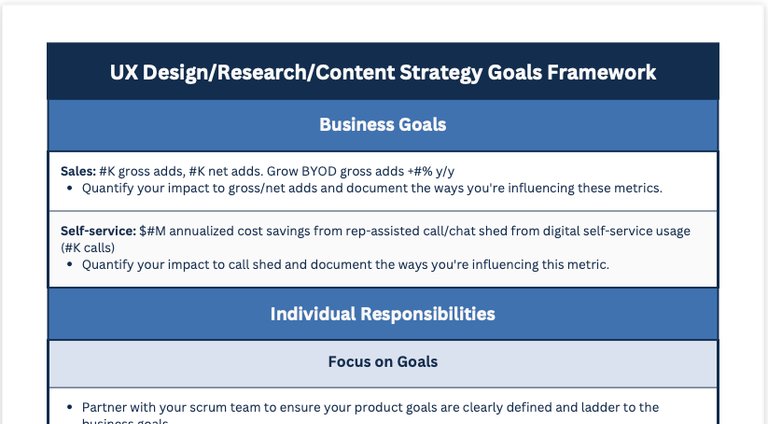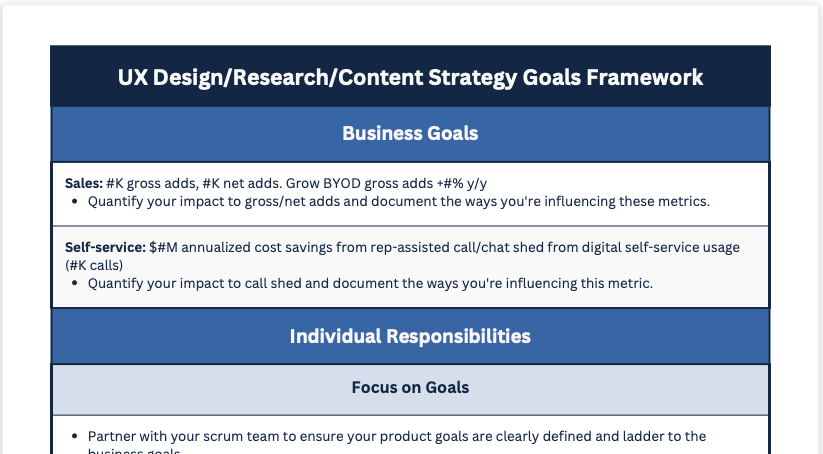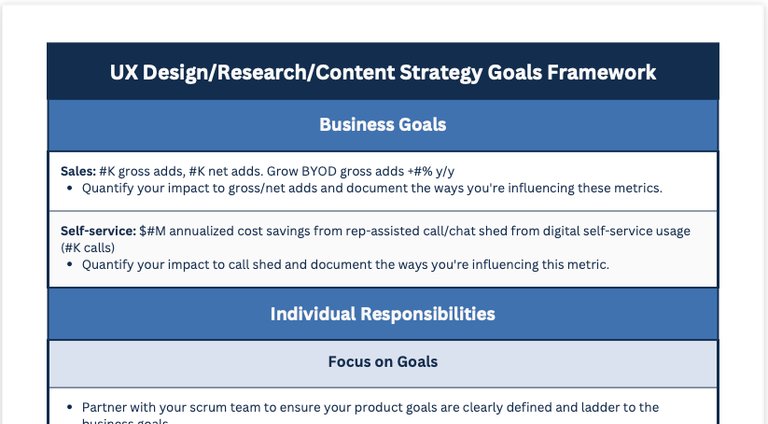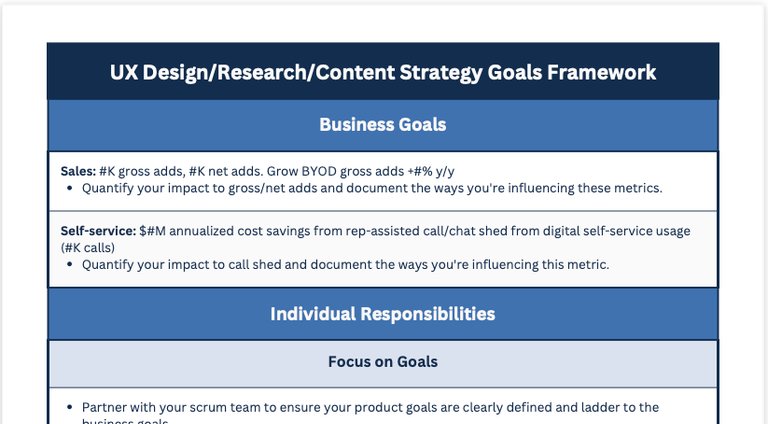Building a Product Strategy Framework That Actually Works
Product strategy is often where good intentions go to die. Teams spend weeks crafting beautiful strategy documents that collect dust while day-to-day decisions continue to be made reactively. After leading product strategy at companies ranging from Fortune 500 to high-growth startups, I've learned that the best strategies aren't just well-reasoned—they're built to be actionable.
The Problem with Most Product Strategies
Most product strategies fail not because they're wrong, but because they're not designed for execution. They're academic exercises that:
- Lack clear decision-making frameworks for everyday choices
- Don't connect strategy to metrics that teams actually track
- Ignore implementation constraints like technical debt and resource limitations
- Fail to evolve as market conditions change
The result? Teams revert to feature factories, chasing short-term wins while losing sight of long-term value creation.
The Four Pillars of Executable Product Strategy
1. Market Intelligence Engine
Your strategy is only as good as your understanding of the market. Build a systematic approach to gathering and synthesizing market intelligence:
Customer Research Cadence:
- Monthly user interviews (minimum 8-10 per segment)
- Quarterly market analysis and competitive intelligence
- Continuous feedback loops through support, sales, and analytics
Key Questions to Answer:
- What jobs are customers trying to get done?
- Where are current solutions falling short?
- What emerging trends could disrupt the market?
- How are customer expectations evolving?
Actionable Output: Market intelligence summaries that directly inform feature prioritization and roadmap decisions.
2. Value Hypothesis Framework
Clear hypotheses turn strategy from opinion into testable assumptions. For each strategic initiative, define:
The Value Chain:
Market Opportunity → User Problem → Solution Approach → Business Impact
Hypothesis Template: "We believe that [user segment] experiences [problem] because [underlying cause]. If we [solution approach], we will see [measurable outcome] within [timeframe]."
Example: "We believe that enterprise customers experience difficulty onboarding new team members because our current setup process requires technical expertise. If we create a guided onboarding wizard, we will see a 40% reduction in time-to-first-value within 6 months."
3. Decision-Making Architecture
Strategy should make decisions easier, not harder. Build decision trees for common strategic questions:
Feature Prioritization Framework:
- Strategic Alignment (40%): Does this advance our key strategic themes?
- User Impact (30%): How many users benefit and how significantly?
- Business Impact (20%): What's the expected revenue/cost impact?
- Implementation Feasibility (10%): Can we execute this well with current resources?
Resource Allocation Matrix:
- Horizon 1 (70%): Core business optimization
- Horizon 2 (20%): Adjacent market expansion
- Horizon 3 (10%): Transformational bets
4. Execution Rhythm
Strategy without execution rhythm becomes shelf-ware. Establish regular cadences:
Monthly Strategy Reviews:
- Progress against key metrics
- New market intelligence synthesis
- Hypothesis validation results
- Resource allocation adjustments
Quarterly Strategy Updates:
- Full strategy refresh based on learnings
- Roadmap realignment
- Stakeholder communication
- Success criteria evolution
Implementation: The 90-Day Strategy Sprint
Here's how to build your framework in 90 days:
Days 1-30: Foundation Building
- Week 1-2: Market intelligence audit and gap analysis
- Week 3: Customer research planning and execution kickoff
- Week 4: Initial value hypothesis development
Days 31-60: Framework Development
- Week 5-6: Decision-making criteria definition and testing
- Week 7: Resource allocation framework creation
- Week 8: Execution rhythm establishment
Days 61-90: Validation and Refinement
- Week 9-10: Framework testing with real decisions
- Week 11: Stakeholder feedback and iteration
- Week 12: Final framework documentation and rollout
Measuring Strategy Success
Your strategy framework should improve decision quality, not just decision speed. Track:
Leading Indicators:
- Time from problem identification to solution deployment
- Percentage of features that hit success metrics
- Cross-functional alignment scores in surveys
Lagging Indicators:
- Market share growth in target segments
- Customer satisfaction and retention improvements
- Revenue per customer increases
Common Pitfalls and How to Avoid Them
The Perfection Trap
Problem: Waiting for perfect information before making strategic decisions. Solution: Build comfort with directionally correct decisions that can evolve.
The Consensus Trap
Problem: Diluting strategy to make everyone happy. Solution: Use data and customer evidence to drive difficult prioritization decisions.
The Detail Trap
Problem: Getting lost in tactical details instead of strategic direction. Solution: Maintain clear separation between strategy (what and why) and tactics (how and when).
Making It Stick: Strategy as Living Document
The best product strategies evolve continuously. Your framework should be:
- Hypothesis-driven: Every major decision should be a testable bet
- Evidence-based: Regular updates based on market and customer learnings
- Action-oriented: Clear next steps for every strategic element
- Measurable: Specific metrics that prove or disprove strategic assumptions
The Floor & Decor Case Study
At Floor & Decor, we used this framework to drive a 40% increase in customer engagement across digital touchpoints. The key was connecting strategic themes (omnichannel experience) to specific user jobs (visualizing products in home context) to measurable outcomes (conversion rates and customer satisfaction).
The framework helped us:
- Prioritize augmented reality features over other requested capabilities
- Allocate engineering resources across mobile, web, and in-store experiences
- Measure success through customer journey completion rates rather than feature usage
Your Next Steps
- Audit your current strategy process - Where are decisions getting stuck?
- Start with one pillar - Begin with market intelligence or decision-making frameworks
- Test with real decisions - Apply the framework to current prioritization challenges
- Iterate based on outcomes - Refine the framework based on what works
Remember: The goal isn't to create the perfect strategy framework, but to build one that makes your team more effective at creating customer value. Start simple, measure outcomes, and evolve based on what you learn.
Want to see this framework in action? Check out my Floor & Decor case studies where we applied these principles to drive measurable business results in a competitive retail environment.
Want more insights like this?
Subscribe to get weekly articles on product strategy and UX design.
No spam, unsubscribe at any time. We respect your privacy.




